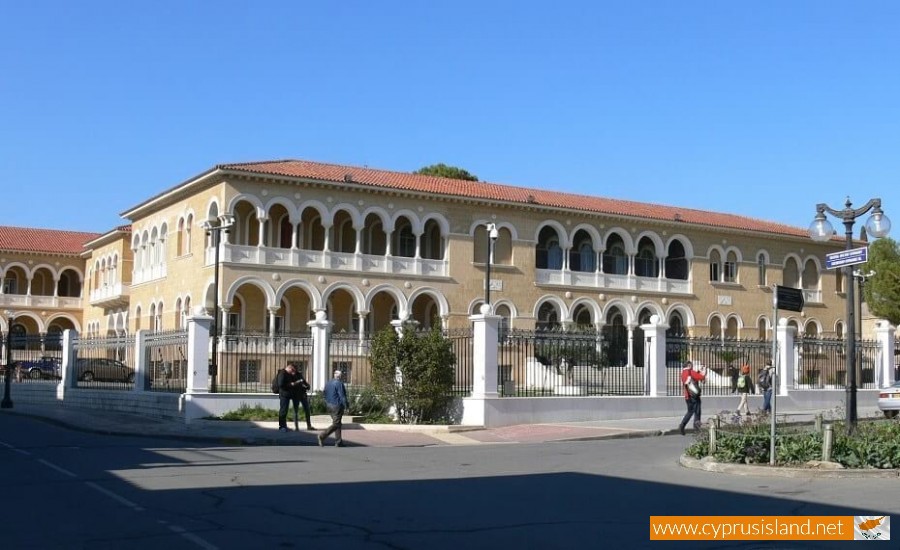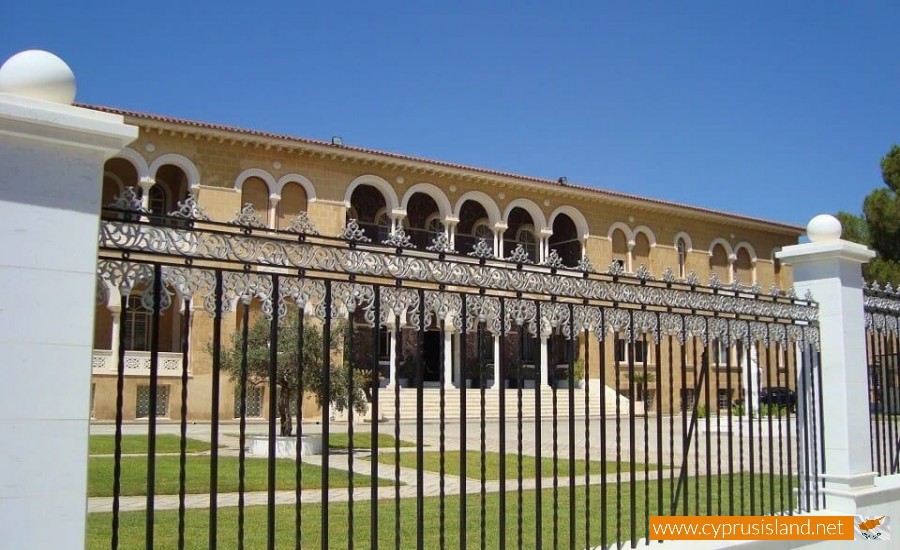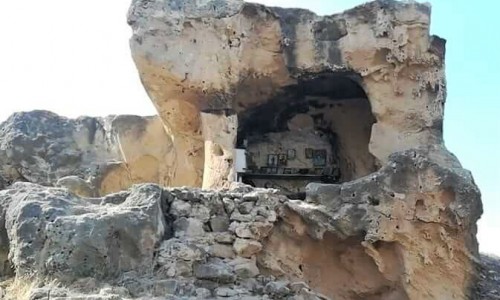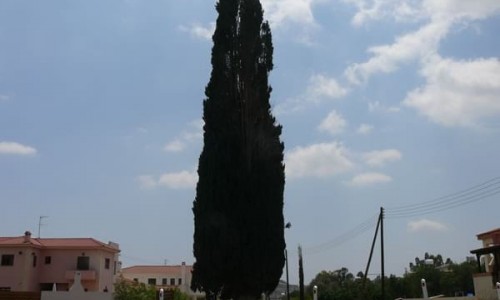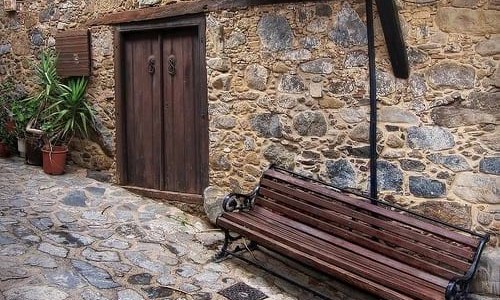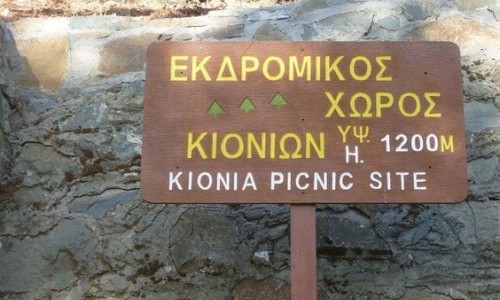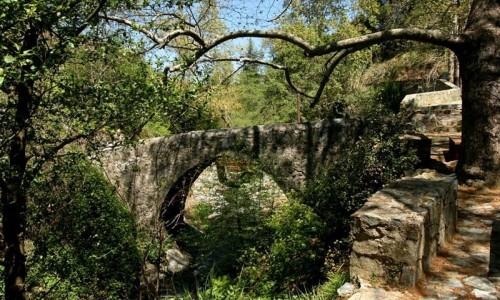Archbishop's Palace
In the historic center of Nicosia, the capital of Cyprus, stands the Archbishop’s Palace, a monumental building that embodies not just the authority of the Orthodox Church, but the cultural soul and national resilience of the Cypriot people. It is one of the most symbolically charged landmarks in the city—part residence, part spiritual seat, part cultural beacon.
A Tale of Two Palaces: Old and New
The Archbishop’s Palace as we see it today is the result of a layered history—two distinct but connected structures, each telling its own story.
The Old Archbishop’s Palace
The original palace dates back to the late 17th or early 18th century. Built in a classical style with arched entrances and a fortress-like exterior, it served for centuries as the residence of the Archbishop and a central point of religious governance on the island. Today, this building houses the Folk Art Museum and the National Struggle Museum, preserving the memory of both Cypriot tradition and the fight for independence.
The New Archbishop’s Palace
Right next door is the striking New Archbishop’s Palace, completed in 1960. Commissioned by Archbishop Makarios III—Cyprus’s first President and a towering figure in its modern history—the building was constructed in a neo-Byzantine style as a deliberate statement of continuity between Cyprus’s Christian heritage and its national aspirations. The palace blends classical Byzantine design with modern monumental proportions: two floors, ornate loggias, arched windows, and beautifully sculpted stonework, all set in a peaceful courtyard.
More Than a Residence: A Cultural Complex
Though the palace itself remains a private residence and administrative center, the complex is open to the public through several adjoining institutions. Together, they form one of the most important cultural clusters in Nicosia.
1. The Byzantine Museum
Located on the palace grounds, the museum is one of the most significant in Cyprus. It holds an exceptional collection of over 200 icons, spanning from the 9th to the 19th century. Here, visitors can admire rare Byzantine mosaics, sacred relics, and fresco fragments that survived the centuries—and in some cases, conflict and looting. These icons are not just religious objects; they are masterpieces of Mediterranean spiritual art.
2. The Archbishopric Library
This library contains rare ecclesiastical manuscripts, liturgical books, and historic documents related to both the Church and the island’s history. Though not always open to the public, its scholarly value is immense.
3. Art Gallery
Housed in the upper floor of the museum complex, this gallery features Western European paintings from the 15th to 19th centuries, Greek engravings, and artworks that chronicle the Greek War of Independence. It also includes contemporary Cypriot art, showing the island’s evolution through both faith and creativity.
4. Folk Art Museum
Found in the Old Archbishop’s Palace, this museum presents a vivid picture of rural life in Cyprus over the past centuries. Displays include embroidered costumes, handwoven textiles, tools, and household items—all showcasing the richness of Cypriot craftsmanship.
5. National Struggle Museum
Also located in the old wing, this museum commemorates Cyprus’s fight against British colonial rule in the mid-20th century. Documents, photographs, personal belongings, and resistance memorabilia bring visitors closer to the emotional and political heartbeat of modern Cyprus.
A Monument to Archbishop Makarios III
Until 2008, the palace courtyard prominently featured a massive bronze statue of Archbishop Makarios III. Standing nearly 10 meters tall and weighing 13 tons, it symbolized his powerful role in Cyprus’s journey to independence. Although the statue has since been relocated to Kykkos Monastery, a smaller, marble version still stands in the courtyard, honoring his legacy.
Visiting the Palace Area
The Archbishop’s Palace is located within Nicosia’s walled city, directly across from the Pancyprian Gymnasium and near St. John’s Cathedral—a 17th-century church known for its vivid frescoes and gilded iconostasis. The location is ideal for a cultural walk through old Nicosia, combining history, art, and spirituality in one compact area.
Visitor Information
- Byzantine Museum and Art Gallery: Open Monday to Saturday, usually from 9:00 AM to 1:00 PM.
- Folk Art & National Struggle Museums: Typically open Tuesday to Saturday, morning and early afternoon.
- Admission Fees: Very affordable, often with discounts for students and seniors.
- Accessibility: The newer buildings are generally accessible; however, parts of the old palace may have limited mobility access due to their historic nature.
Note: Schedules can change on religious holidays or due to special events, so checking ahead is always recommended.
Why It Matters
The Archbishop’s Palace is far more than just a religious building. It is:
- A spiritual center of the Orthodox Church of Cyprus
- A repository of Cypriot history and identity
- A symbol of cultural endurance and independence
- A place where art, politics, and religion intersect
Whether you’re a pilgrim, a history enthusiast, or an art lover, visiting this site offers a deep, layered experience of Cypriot heritage.
Nearby Landmarks to Explore
- St. John’s Cathedral – beautiful 17th-century Orthodox church
- Ledra Street – Nicosia’s bustling pedestrian zone
- Cyprus Museum – national archaeological museum
- Leventis Municipal Museum – showcases Nicosia’s urban history
- Green Line/Ledra Checkpoint – where Nicosia’s divided past becomes tangible
The Archbishop’s Palace in Nicosia is a living symbol of Cyprus’s faith, history, and identity. It’s not just a place of administration or worship—it’s a space where the threads of centuries converge. From priceless icons and historic manuscripts to memories of resistance and rebirth, it stands as a proud reminder that Cyprus is not only a crossroads of civilizations, but a guardian of its own powerful story.


